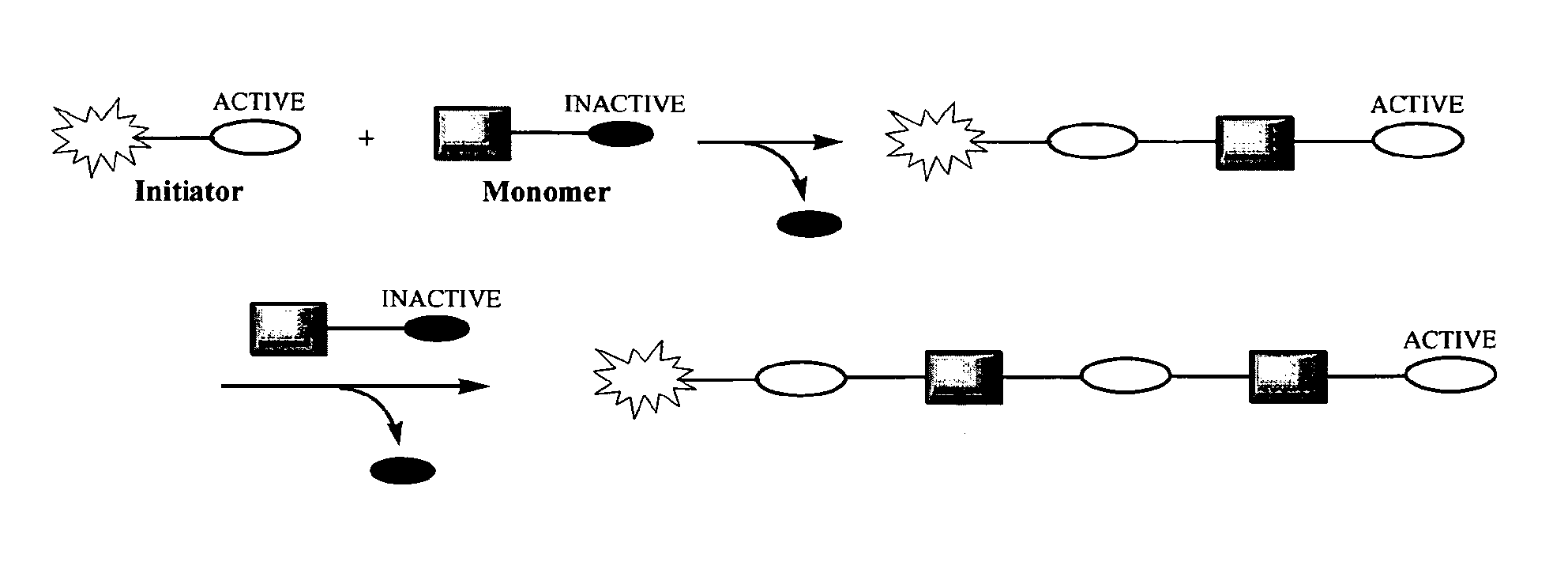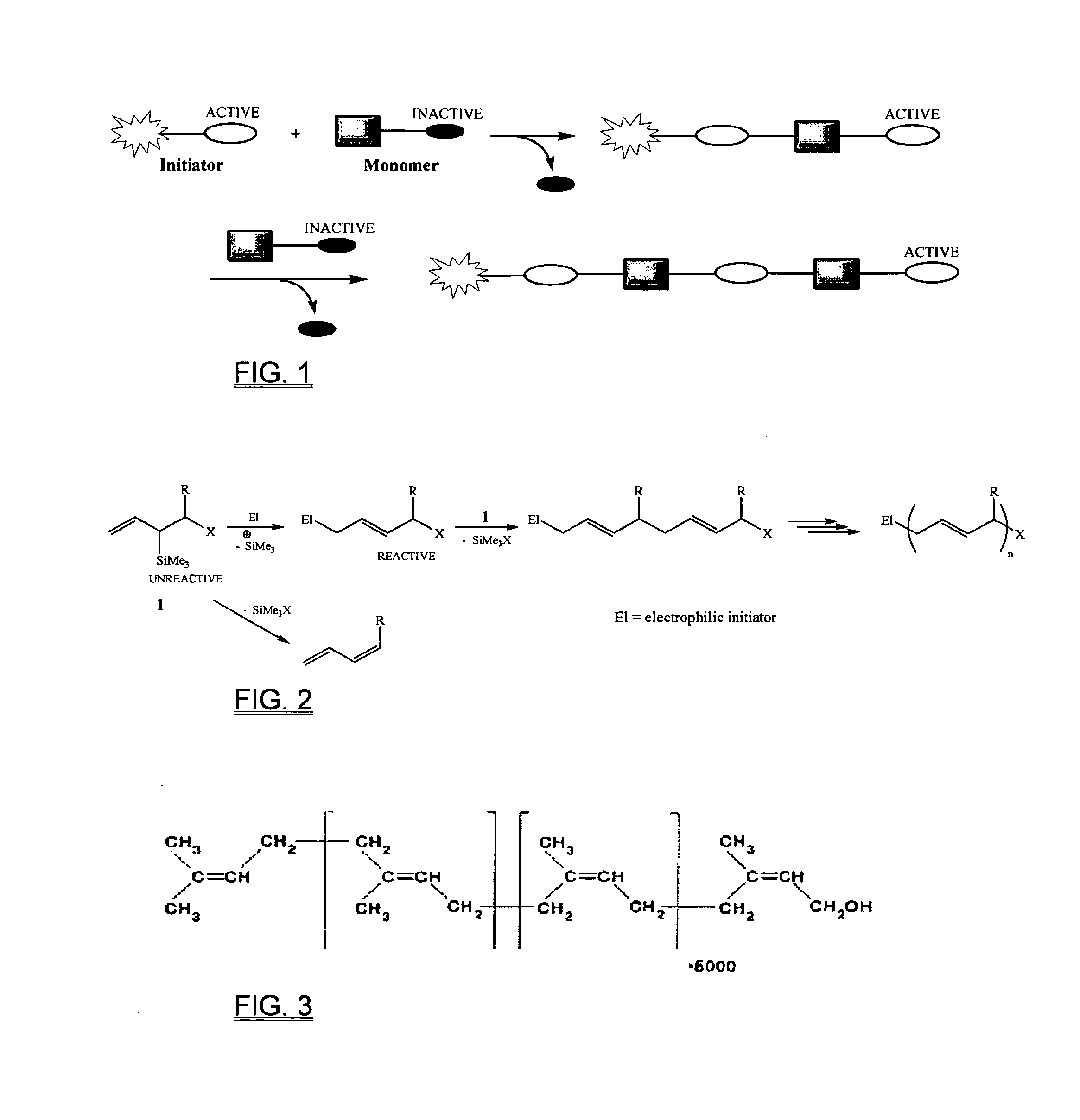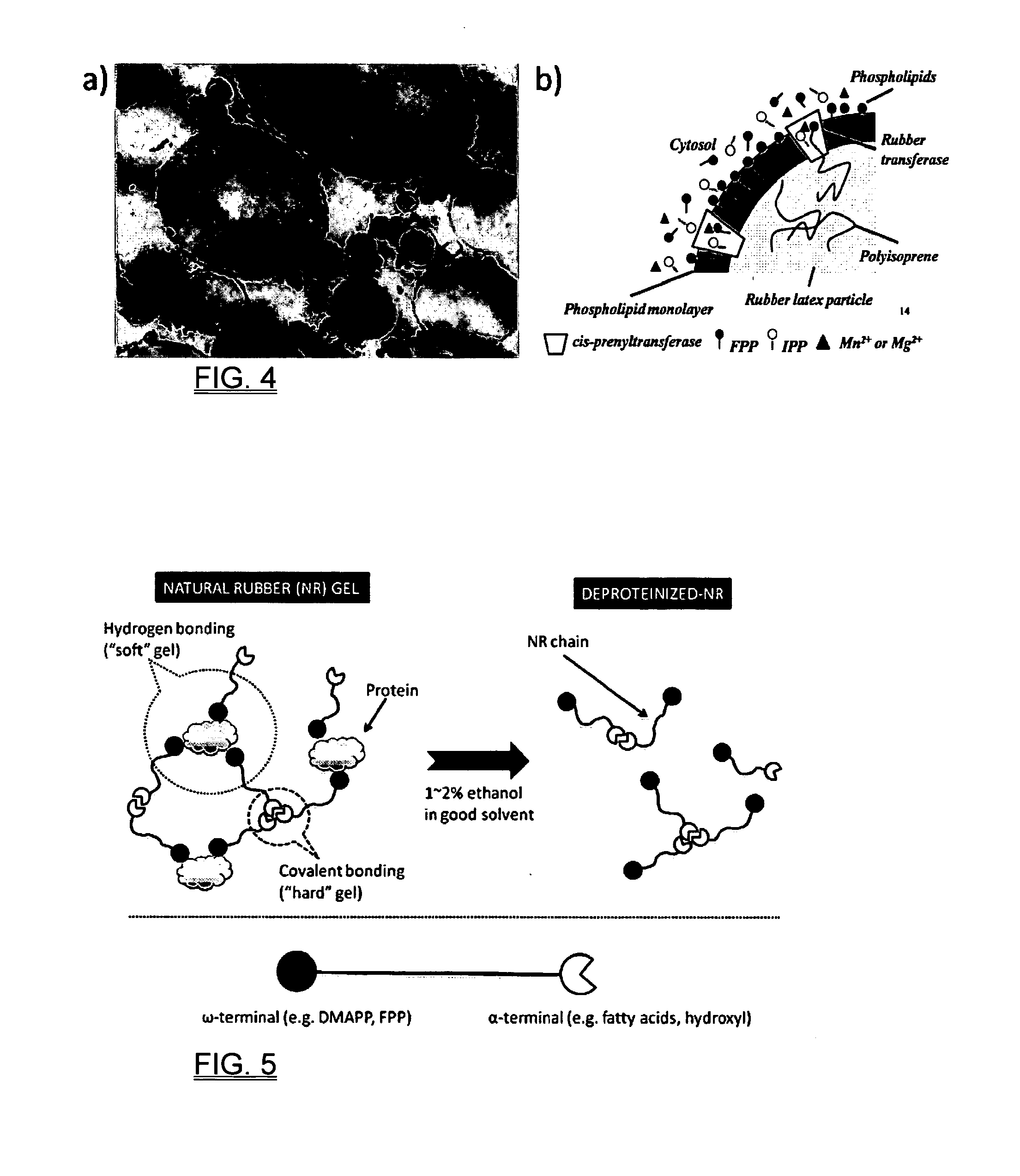Biosynthesis of polyisoprenoids
a technology of polyisoprenoids and biosynthesis, applied in the direction of fertilization, etc., can solve the problems of not producing the desired monodisperse polymer, such as specific polypeptides or dna, and the understanding of the mechanism of natural rubber biosynthesis is far from complete, and the goal has not been achieved
- Summary
- Abstract
- Description
- Claims
- Application Information
AI Technical Summary
Problems solved by technology
Method used
Image
Examples
example i
[0246]CONTROL EXPERIMENT. 2 μL of buffer (100 mM Tris-HCl, pH 7.5, 1.25 mM MgSO4, 5 mM DTT), 0.4 μL (4×10−8 mol) of 100 mM IPP in water, 0.6 μL (6×10−8 mol) of 1 mM FPP in water and 2 mg of WRP-1 in 17 μL of water were added to microwell plates. The reactions were allowed to proceed for 5 hrs and 24 hrs at 25° C. in an incubator. The reactions were stopped by adding 40 μL (3.2×10−6 mol) of 80 mM EDTA in water. The filter plate was vacuumed and then washed two times with 150 μL water then once with 95% ethanol, then oven-dried at 37° C. for 30 minutes. The filters from the well-plates were immersed in THF to dissolve the rubber, and then the solute was filtered through Acrodisc 0.45 μm PTFE filters (Waters) to remove the gel fraction. The solute was then dried. The soluble fraction was dissolved in freshly distilled THF and filtered with 0.45 μm PTFE filters with sample concentrations between 0.5 and 0.8 mg / mL for SEC analysis. Table 2 summarizes the data. #1H and #2H refer to the SE...
example ii
[0248]2 μL of buffer (100 mM Tris-HCl, pH 7.5, 1.25 mM MgSO4, 5 mM DTT), 0.4 μL (4×10−8 mol) of 100 mM IP in ethanol, 0.6 μL (6×10−8 mol) of 1 mM FPP in water and 2 mg of WRP-1 in 17 μL of water. Reaction times of 5 hrs and 24 hrs were used at 25° C. in an incubator. The reactions were stopped by adding 40 μL (3.2×10−6 mol) of 80 mM EDTA in water. The filter plate was vacuumed and then washed two times with 150 μL water then once with 95% ethanol, then oven-dried at 37° C. for 30 minutes. Molecular weight characterization was performed as described above. The sample concentration ranged from 0.5 to 1.0 mg / mL. Table 3 summarizes the data. #1H and #2H refer to the SEC peaks in the high molecular weight region. (see FIG. 21)
TABLE 3Summary of reaction conditions and SEC results for example IIHighSECMWElutionPeak MWTimeFractiontime (min)g / mol × 106Rg (nm)SamplesIPFPP(hrs)~wt %#1H#2H#1H#2H#1H#2HWRP-15037.3—1.62—77.2—WRP-1 / 5(IP)++58036.742.21.930.3889.841.4WRP-1 / 24(IP)++248036.641.81.990.4...
example iii
[0250]Utilizing the equipment and procedure like that of example I, 2 μL of buffer (100 mM Tris-HCl, pH 7.5, 1.25 mM MgSO4, 5 mM DTT), 0.4 μL (4×10−8 mol) of 100 mM IP in ethanol, 0.6 μL (6×10−8 mol) of 1 mM FPP in water and 2 mg of WRP in 13 μL of water and 4 μL of 100% ethanol to a reaction volume of 20 μL were combined reaction times of 5 hrs and 24 hrs were used at 25° C. in an incubator. There were 9 wells for 5 hrs and 9 for 24 hrs to a total of 18 wells. The reactions were stopped by adding 40 μL (3.2×10−6 mol) of 80 mM EDTA in water. The filter plate was vacuumed and then washed two times with 150 μL water then once with 95% ethanol, then oven-dried at 37° C. for 30 minutes. Molecular weight characterization was followed like that of the preceding example. The sample concentration ranged from 0.5 to 1.0 mg / mL. Table 4 summarizes the data. #1H and #2H refer to the SEC peaks in the high molecular weight region. (see FIG. 22)
TABLE 4Summary of reaction conditions and SEC results...
PUM
| Property | Measurement | Unit |
|---|---|---|
| temperature | aaaaa | aaaaa |
| weight | aaaaa | aaaaa |
| fat soluble | aaaaa | aaaaa |
Abstract
Description
Claims
Application Information
 Login to View More
Login to View More - R&D
- Intellectual Property
- Life Sciences
- Materials
- Tech Scout
- Unparalleled Data Quality
- Higher Quality Content
- 60% Fewer Hallucinations
Browse by: Latest US Patents, China's latest patents, Technical Efficacy Thesaurus, Application Domain, Technology Topic, Popular Technical Reports.
© 2025 PatSnap. All rights reserved.Legal|Privacy policy|Modern Slavery Act Transparency Statement|Sitemap|About US| Contact US: help@patsnap.com



